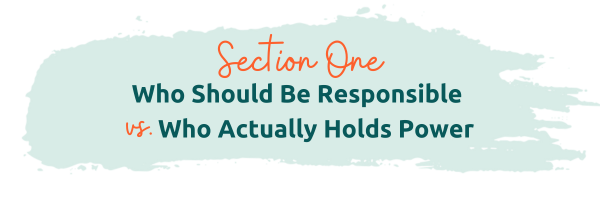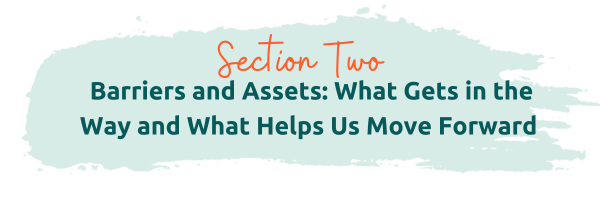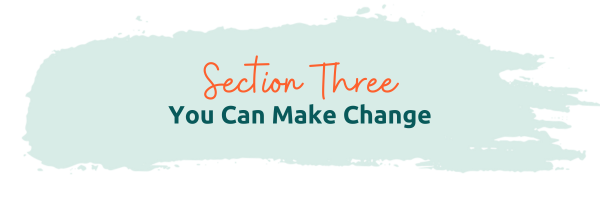Here’s what changemakers say (and what we can do next).
Last month, I asked for your help in answering a big question: with trust in public institutions falling, who do we think is responsible for tackling social problems?
I heard from nonprofit leaders, public servants, business owners, consultants, activists, and community members.
The short answer? Even as trust shifts and gaps grow between responsibility and action, there's a huge opportunity. New players, new collaborations, and everyday individuals are increasingly positioned to drive real change.
Here’s the high-level snapshot:
People believe responsibility for addressing social problems should be shared but they see big gaps in who is actually stepping up.
Funding, time, political division, and burnout are significant barriers, yet you report several tools and assets that help move things forward.
Despite feeling frustration or overwhelm, people feel personally called to help – not as heroes, but as contributors, collaborators, and connectors.
Taken together, these insights tell a powerful story about where we are in this moment, and where we could go next.
Let’s dive in.
One of the clearest patterns was a mismatch between responsibility and influence.
Here’s what you told me:
People overwhelmingly believe that government should carry the greatest responsibility in responding to social problems. It has the scale, the resources, and the mandate.
But many feel government isn’t stepping up, which shifts pressure onto nonprofits and everyday people.
Meanwhile, actual power is perceived to be shared among government actors, businesses, grassroots movements, and nonprofit organizations.
That gap matters. When responsibility lives in one place and power lives somewhere else, it creates frustration, disconnection, and a sense of stagnation. It’s a major driver of why the world feels the way it does.
And yet, something interesting is happening. While people believe government should take the lead (and currently isn’t), they also see huge opportunity for cross-sector collaboration. This tension – between institutional gaps and emerging possibility – signals a real market shift, which creates opportunity for new coalitions to form, new players to emerge, and new pathways to open up.
As one person put it:
“Who has the most power is different than who will actually make change.”
The data shows we can interpret that in two ways: as a reason to feel discouraged, or as an invitation to try new things. We get to choose how we see it.
And yet... that isn’t the whole story.
You also told me what’s standing between you and driving solutions to the problems you care about.
*Note: Respondents could select up to three answers.
These themes run deeply across sectors. Systemic challenges collide with personal limits, and that tension shows up everywhere.
Alongside the barriers, the biggest things that help drive solutions to social problems are:
Number one by quite some distance… Education and awareness
Tied for second … Passion and Community/other people
A close third… Persistence
And a distant fourth… Skills and training
*Note: Respondents could select up to three answers.
This was striking to me. It paints a picture of a world where information and grit are more useful than abilities. In other words, what you know matters more than what you know how to do. That has real implications because while skills training can be time-consuming and expensive, acquiring knowledge is more accessible than ever.
And when you combine that knowledge with the passion, persistence, and people around you, something important becomes clear…
→ which takes us to the next section: the power of the individual.
One of my favourite parts of the survey submissions was reading how people personally feel called to respond to social problems. The responses were full of honesty, nuance, and heart.
A few themes stood out:
Folks don’t see themselves as heroes swooping in to fix everything, but as helpers, supporters, collaborators and connectors.
They recognize the power of small, individual acts such as voting, supporting nonprofit organizations, or participating in a community effort. As one person put it: “My actions matter. My corner of the world matters.”
They want to make a difference through their strengths and daily lives, using professional skills, lived experience, and personal values to contribute. Individual impact doesn’t have to be activism, and can look like using what you already have.
People want to act – and are acting – while also feeling exhausted, overwhelmed, stretched thin, and unsure.
One person captured it perfectly:
“I am motivated to show up and help and collaborate. I am overwhelmed at what is required of me right now.”
But here’s the most striking insight of all:
A significant number of respondents see their role as conveners, catalysts, coordinators, and translators between sectors. And when you remember the new possibilities emerging in a moment of falling trust in government actors, this is BIG.
At a time of massive opportunity for new coalitions, partnerships, and cross-sector collaboration, people don’t just want to participate; they want to connect, coordinate, and lead from the middle.
That means there’s an opening in the social-change landscape… and a set of people who are eager and ready to step into it.
Boom.
We’re living in a moment where our problems are vast, and trust in traditional institutions is falling. But the survey results tell a more hopeful story sitting right alongside the challenges:
There are new opportunities for emerging players, cross-sector partnerships, and community-led collaborations to step into the gaps and take on the issues we face.
And the responses point toward clear actions we can take to make the most of this moment:
Education and awareness are powerful tools. The number one asset people named was knowledge – learning about issues and helping others understand them. This is a reminder that sharing information, perspectives, and stories really matters. You never know who is absorbing what you put into the world and shifting their worldview because of it.
Collaboration is essential and accessible. Many people want to act as conveners and connectors. Collaboration can look like checking in on a neighbor, joining a local effort, or working across sectors on a big initiative. The scale varies, but the principle is the same: trying new ways of work and new partners to work with.
Focus on what’s possible and pace yourself. People feel stretched thin, and that strain is real. The mandate isn’t to do everything; it’s to keep taking the next right step. Breaks, boundaries, and rest aren’t just helpful, they make sustained impact possible.
Don’t underestimate the power of hope. The doom narrative is loud and constant, but your survey responses revealed something quieter and more profound: people still feel called to make a difference. That hope is a resource. It’s also a strategy.
There’s another implication here too — one that’s easy to miss but deeply important:
When institutional trust declines, the ecosystem of changemakers expands.
New coalitions form. New leaders emerge. New ways of solving problems gain traction. This shift isn’t simply a void, it’s an opening.
These themes sit at the heart of my upcoming book, coming February, 2026. It’s about how we unlock the tools that help us drive social change when the headwinds are strong and the path isn’t obvious.
If this conversation resonates with you, I’d love for you to share these findings with a friend, colleague, or community member who would find them meaningful.
Thank you — truly — to everyone who shared your voice. I learn so much from you.








